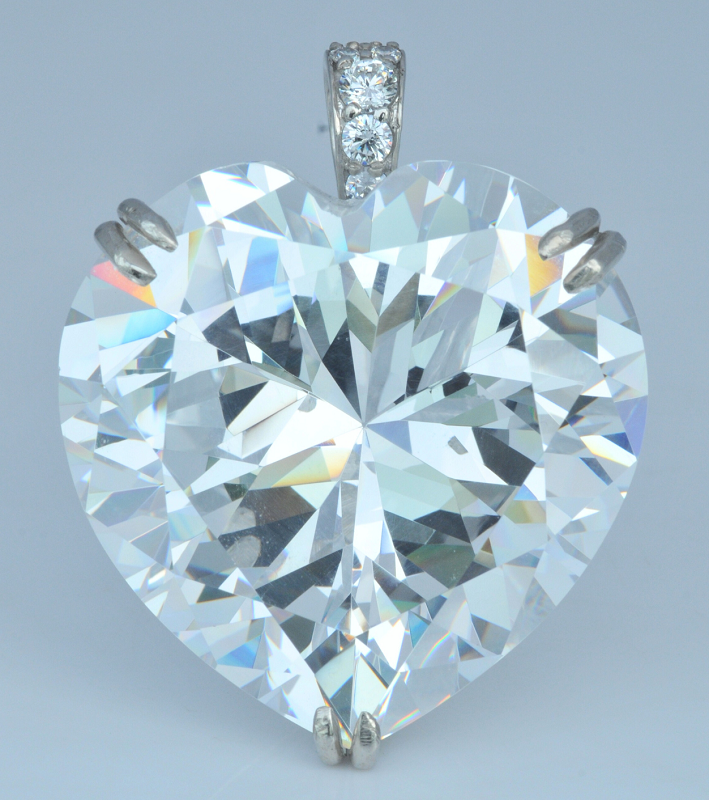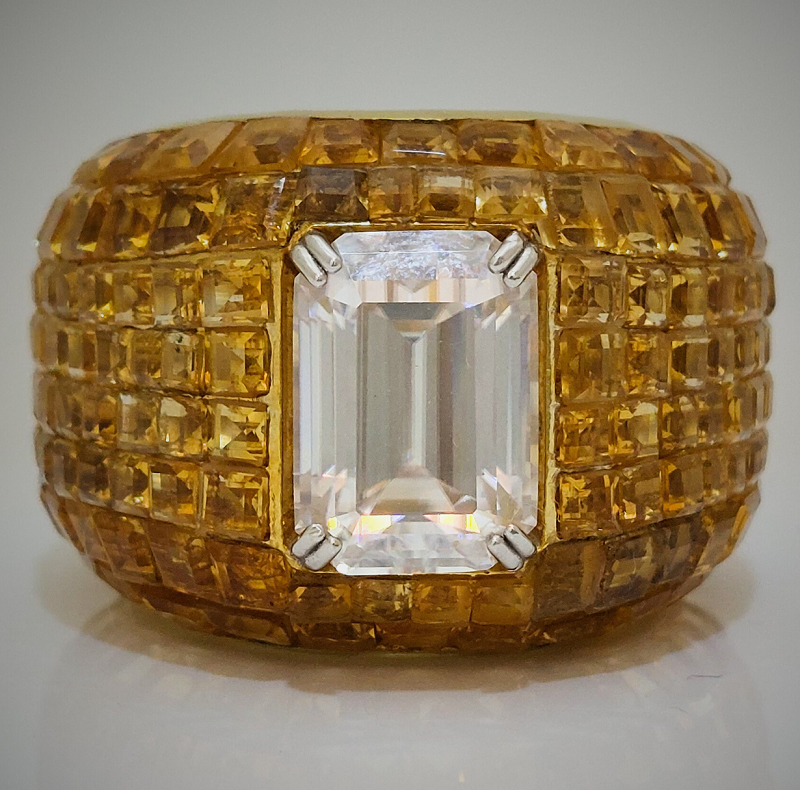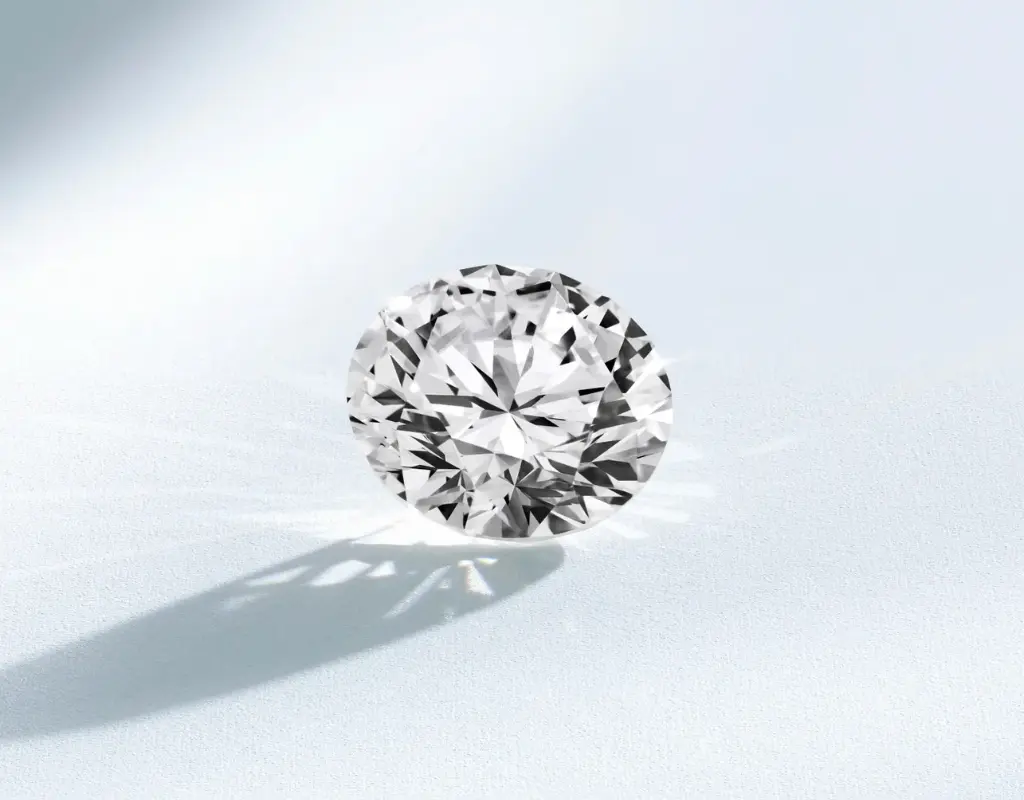
There are a few substitutes for diamonds that have become more well-liked recently. These days, nothing embodies high luxury more than a stunning diamond set in platinum or gold. Though the typical, pricey diamonds could break the bank, there are affordable alternatives that will still look just as elegant as the ones you saw at your neighborhood jeweler. They include moissanite, lab-grown diamonds, enhanced diamonds, and cubic zirconia. Although these gemstones all have a diamond-like look, there are notable differences between them in terms of composition, origin, physical characteristics, and value. We will examine these options in detail in this blog article, looking at their special qualities, production methods, and advantages and disadvantages. Having a clear grasp of these variations will help you choose the stone that best fits your needs and budget.
Section 1: Cubic Zirconia

Composition and Properties:
Cubic zirconia (CZ) is a synthetic gemstone made from zirconium dioxide. It was first synthesized in the 1970s and quickly gained popularity as a diamond simulant. CZ possesses a high refractive index, making it quite brilliant and sparkling. However, it is softer than a diamond and ranks around 8 on the Mohs scale of hardness. This means it is more prone to scratches and wear over time.
Manufacturing Process:
The manufacturing process of cubic zirconia involves melting and combining zirconium oxide with stabilizing additives. The mixture is then cooled, cut into desired shapes, and polished to create gem-quality CZ stones. The result is an affordable and visually appealing alternative to natural diamonds.
Pros and Cons:
Cubic zirconia offers several advantages, including its affordability, diamond-like appearance, and wide range of available colors. It is an excellent choice for those seeking an affordable option for jewelry.
However, CZ's relatively low hardness and susceptibility to scratching may affect its long-term durability. Additionally, it lacks the natural allure and rarity associated with diamonds but Adastra's Cubic Zirconia is enhanced with a diamond-dusted coating to achieve a brilliant shine and exquisite luster, reminiscent of diamonds.
Cubic Zirconia was discovered in the 1930s and is composed of Zirconium Oxide, which is a mix of Zirconium and Oxygen.
Section 2: Moissanite

Section 2: Moissanite
Composition and Properties:
Moissanite is a lab-grown gemstone composed of silicon carbide. It was first discovered in 1893 in a meteorite crater and later synthesized for use in jewelry. Moissanite possesses exceptional brilliance, fire, and hardness. It is considered one of the hardest gemstones, ranking at 9.25 on the Mohs scale.
Manufacturing Process:
Moissanite is created through a high-temperature process known as chemical vapor deposition. In this method, a mixture of gasses is introduced into a chamber, where they undergo a chemical reaction to form moissanite crystals. These crystals are then cut, polished, and graded for use in jewelry.
Pros and Cons:
Moissanite offers several advantages, including its remarkable sparkle, durability, and affordability compared to natural diamonds. It is an excellent alternative for those seeking a diamond-like appearance without the premium price tag. However, some individuals find that moissanite exhibits a different type of brilliance compared to diamonds, and its color may have a slightly yellow or greenish hue.
Section 3: Lab Grown Diamonds

Composition and Properties:
Lab-grown diamonds, also known as synthetic or cultured diamonds, are grown in a laboratory under controlled conditions. They have the same chemical composition and physical properties as natural diamonds, consisting of carbon atoms arranged in a crystal lattice structure.
Manufacturing Process:
There are two primary methods used to create lab-grown diamonds: chemical vapor deposition (CVD) and high-pressure, high-temperature (HPHT). In the CVD process, a diamond seed is exposed to a carbon-rich gas, which deposits carbon atoms layer by layer, gradually forming a diamond. In the HPHT method, a small diamond seed is placed under high pressure and temperature, allowing carbon atoms to crystallize around it, resulting in a larger diamond.
Pros and Cons:
Lab-grown diamonds offer several advantages, including their identical chemical and physical properties to natural diamonds, ethical sourcing, and typically lower prices compared to mined diamonds. They are an excellent option for those seeking a genuine diamond alternative while supporting sustainable practices. However, lab-grown diamonds may lack the same rarity and emotional significance associated with natural diamonds.
Section 4: Enhanced Diamonds

Composition and Properties:
Enhanced diamonds are natural diamonds that have undergone specific treatments to improve their appearance. These treatments aim to enhance clarity and color, resulting in a more visually appealing stone.
Types of Enhancements:
Common diamond enhancements include laser drilling, which removes internal inclusions, and fracture filling, which hides surface-reaching fractures. Another treatment method is high-temperature annealing, which alters the diamond's crystal lattice structure to enhance color.
Pros and Cons:
Enhanced diamonds offer the advantage of improved visual appearance compared to untreated diamonds. They can provide a more affordable option for those seeking better clarity or color. However, it is crucial to disclose these enhancements when buying or selling diamonds, as their value may differ from untreated stones. Additionally, the treatments used may have varying degrees of permanence and may require special care over time.
In conclusion, cubic zirconia, moissanite, lab-grown diamonds, and enhanced diamonds are all popular alternatives to natural diamonds. Each option has its unique characteristics, manufacturing processes, and advantages and disadvantages. By understanding these differences, you can make an informed decision based on your preferences, budget, and desired qualities in a diamond alternative. Whether you prioritize affordability, durability, ethical considerations, or the prestige associated with natural diamonds, there is a suitable option available to meet your needs.







